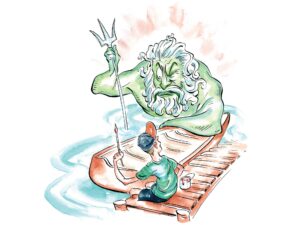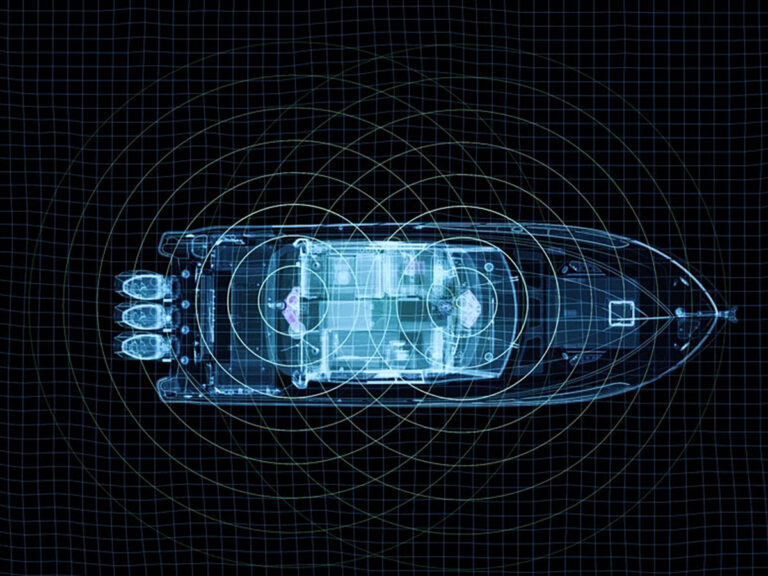
Many boaters live in the age of outboards. These engines are often considered the only choice for center-console saltwater fishing boats. Yet Volvo Penta is bent on opening boaters’ eyes to the advantages of alternative marine power for saltwater fishing, namely Volvo Penta’s diesel inboards coupled with Aquamatic Duoprop sterndrives.
To prove the point, Volvo Penta invited me to spend a few days fishing with them in the waters of Nantucket Sound, south of Chatham, Massachusetts, targeting bluefish, striped bass and false albacore.
We fished aboard two center-consoles, including a Solace 415CS powered by twin Volvo Penta diesels. The second center-console was a Southport 30 FE, and that was the boat which really captured my attention and admiration.

The Southport featured a single-engine configuration. A 440 hp Volvo Penta D6 diesel was mounted amidships under the seat console and connected to an Aquamatic DPI sterndrive with a jackshaft. This completely freed up the aft cockpit to create a wide-open fishing area, with no outboards to obstruct lines. A big swim platform let us walk aft through a transom door to follow hooked fish across the stern.
The Volvo Penta D6 is a super-sophisticated turbo- and super-charged common-rail inline-six cylinder engine with twin overhead cams and 5.5 liters of displacement. If the 440 hp sounds a bit light for the 11,864-pound Southport, remember that a diesel generates far more torque than an equivalent-horsepower gas outboard, and so the diesel can swing a bigger propeller—in this case, an H5 stainless-steel Duoprop set—resulting in solid performance numbers.
Running to and from the legendary shallow bars and roiling rips of Nantucket Sound confirmed this axiom. The Volvo diesel propelled the 30 FE to 20 mph in 4.8 seconds and 30 mph in 8.1 seconds, and it achieved a top speed of 43.1 mph at 3,800 rpm. The boat was quiet and smooth underway, with none of the loud rattle or smelly exhaust traditionally associated with diesel engines.

That strong acceleration came in handy when one of Nantucket’s infamous rogue waves reared up suddenly on our port beam. Volvo’s Jens Bering was at the wheel, and immediately turned into the wave and hammered the electronic throttle to climb the face of the 12-foot roller. Without the diesel torque and superb control offered by the Duoprop drive, not to mention Bering’s quick response, the episode may have ended quite differently.
Speaking of control, I was impressed with the Volvo Penta joystick system for the single diesel sterndrive. The 30 FE was the first in the US to offer this system. Steering, gear control, bow thruster and throttle are controlled easily with just one hand. To engage the system, you press the Docking button on the base of the joystick control. The system can also hold the boat’s speed and heading at the push of a button.
The joystick was mounted in the armrest of the helm seat of the 30 FE, which made using it ultra-easy, intuitive and comfortable as we maneuvered to troll lures around Nantucket’s treacherous rips. The Aquamatic hydraulic transmission allows for smooth, quiet shifting and pleasantly good low-speed trolling functionality. Some diesels have a tendency to troll too fast. Not so with this system.
I marveled over the optimal fuel efficiency: 2.5 mpg at 2,800 rpm and 27.9 mph, resulting in a cruising range of 359 miles based on 90 percent of its smaller 160-gallon diesel fuel tank. For comparison’s sake, an earlier test of a twin 300 hp Mercury outboard version of this boat achieved optimal efficiency of 1.6 mpg at 3,500 rpm and 26.7 mph, resulting in a cruising range of 334 miles based on 90 percent of its larger 232-gallon gasoline fuel tank.
Read Next: Volvo Penta’s Diesel Engines and Drives

The biggest issue that saltwater boaters have with sterndrives is the inability to tilt the drive out of the water, as it done with outboards, while docked between trips. To prevent sterndrive corrosion in areas such as New England, Volvo Penta’s Arjen Steegstra points out a special paint process and Active Corrosion Protection system engineered for Aquamatic sterndrives.
“The ACP system has been used on our IPS boats for more than 12 years,” Steegstra says. “It protects the drive from galvanic corrosion without sacrificial anodes, and offers a lot of peace of mind for our customers who boat in both brackish and salt water.” Of course, those who use a high-and-dry service, or own a boat lift, needn’t concern themselves.
In an age when filling up a boat can max out a credit card, it’s nice to know that the Volvo Penta D6 diesel DPI power system can save you money at the fuel dock, as well as open up the aft cockpit for better fishing access, and do it all without sacrificing performance or easy handling.









